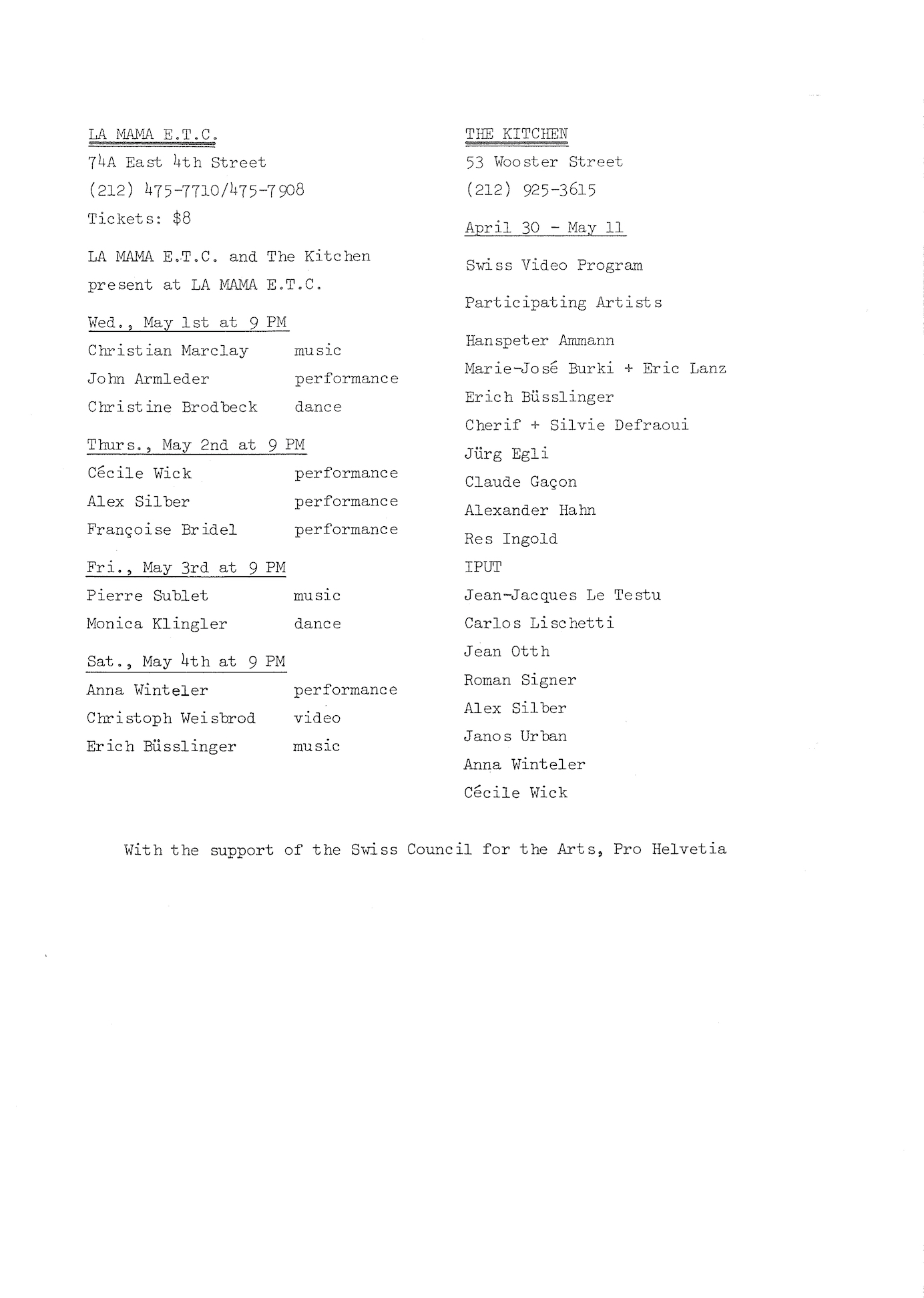1985: FRI.ART made in Switzerland

“When I put on an exhibition, I design it as a work of art. More than big names or stars, what counts for me is that the final result has a meaning and that it communicates something.” This is how Michel Ritter explained the intention behind his first exhibition of international standing in an interview given to Container TV for the opening of FRI.ART made in Switzerland that took place in New York. Housed in five independent art spaces in Manhattan from April to June 1985, this exhibition was not designed as a representative national project but simply as an exhibition of Swiss artists. While renowned artists such as Meret Oppenheim, Markus Raetz and Roman Signer did contribute works, Friart aimed to give the opportunity to a majority of little-known young artists to show their work for the first time in New York, that dynamic metropolis then synonymous with contemporary art.
Having lived there for three years himself and exhibited as an artist at Franklin Furnace in 1980, Michel Ritter still had strong links with those behind the independent art spaces in Manhattan. The concept for FRI.ART made in Switzerland had begun to take form two years beforehand when Pro Helvetia, which was very taken with the project, committed to providing financial support. Thanks to a sum of CHF 145,000, around half the total budget, the cultural foundation enabled Michel Ritter and Paul Jacquat, a founding member of Friart, to create a joint project that did not just exhibit Swiss artists but also involved them in the exhibition design and organisation. As for the exhibition Fri-Art 81 that took place in the old seminary in Fribourg, five artists were invited to Franklin Furnace and each was then asked to invite five others. The exhibition, then, was also in keeping with the participative conception of Friart, whose objective was to reduce the distance between organisers and artists. Around sixty Swiss artists thus exhibited on five independent sites in Manhattan from April to June 1985. While works by Meret Oppenheim, John Armleder and Chérif et Silvie Defraoui were presented at the gallery, The Clocktower, installations by Ian Anüll, Dieter Roth and Anna Winteler were shown at Franklin Furnace. A four-day festival of performances at LA MAMA E.T.C. was got underway by Christian Marclay and several days later, Super 8 and 16 mm films from Daniel Schmid, Heinz Brand and Véronique Goël were screened at the Collective for Living Cinema. Because of the abundance of institutions and artistic events in Manhattan, the young Swiss art scene struggled to attract attention and interest from the New York public was limited. Nevertheless, for the participants, this exhibition on the other side of the Atlantic was a unique experience and resounded in their memories for a long time to come. A collective work exhibited at FRI.ART made in Switzerland would be reproduced for the inauguration of the official Friart building at Petites-Rames 22 in downtown Fribourg in 1991. The exhibition, then, was an important step in the first chapter of the history of the Kunsthalle.
Text written in collaboration with Laura Lanfranchi and presented as part of the exhibition Friart est né du vide. L’esprit d’une Kunsthalle, MAHF Museoscope, 27.08–17.10.2021.
Translation: Jack Sims








